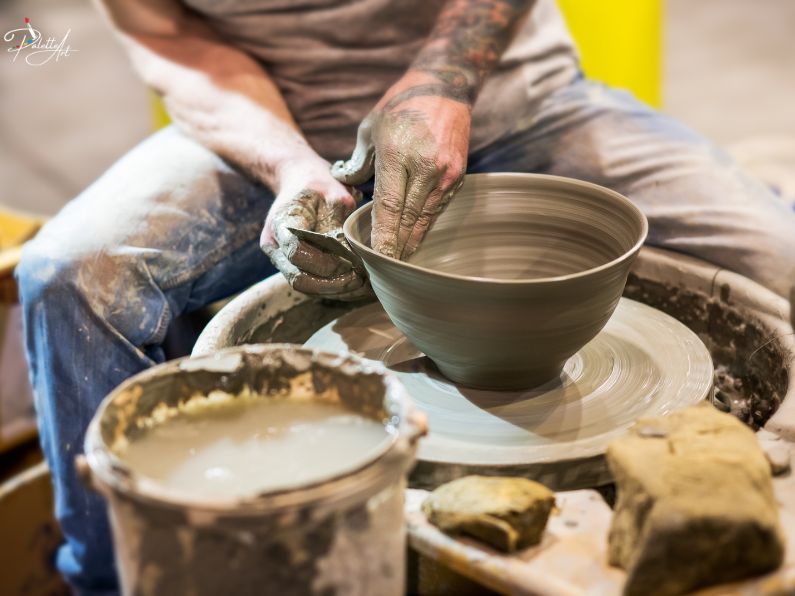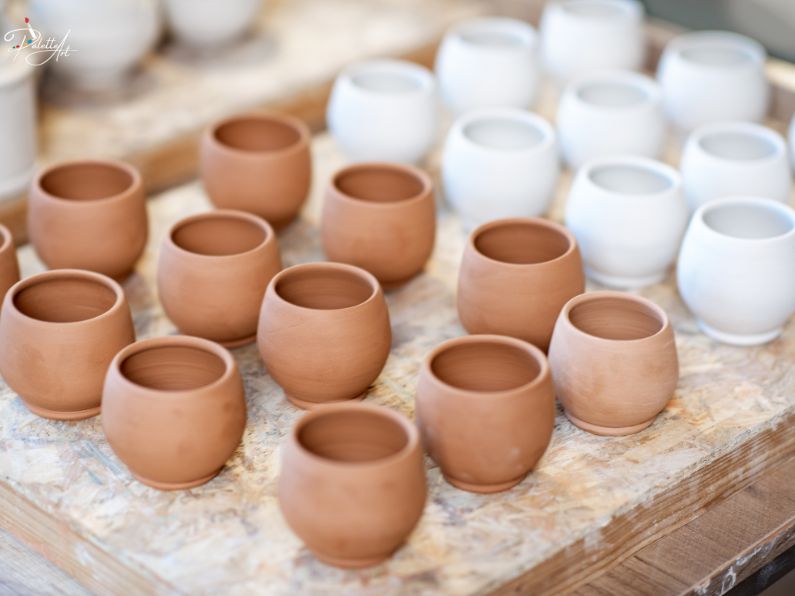Pottery and ceramics are terms that are often used interchangeably and are both used in pottery painting , but actually refer to different aspects of the same art. For beginners, understanding the difference between pottery and ceramics can be a bit confusing. Let’s explore each aspect in simple language with examples to make it easier to understand:
Contents
Material Composition:
The composition of materials is one of the things that can be mentioned about the difference between pottery and ceramics, which we will explain each one below.
Pottery
Pottery refers to objects made of clay that are hardened by heat. This could include items like bowls, vases, and cups. Different types of clay, such as earthenware, stoneware, and porcelain, can be used to create pottery. For example, earthenware pottery is often used for decorative pieces because it’s porous and absorbs water easily, while porcelain pottery is known for its strength and translucency, making it perfect for delicate tableware.
Ceramic
Ceramic is a broader term that includes all objects made from clay that have been fired at high temperatures. This includes not only pottery but also tiles, bricks, and even porcelain figurines. For instance, ceramic tiles are commonly used for flooring and walls in bathrooms and kitchens due to their durability and water resistance.

Production Process:The Difference Between Pottery and Ceramics
Pottery
The process of making pottery typically involves hand-building or wheel-throwing clay into the desired shape. Once formed, the pottery is dried to remove excess moisture and then fired in a kiln at high temperatures to harden the clay and create a durable object. An example of hand-built pottery could be a coil pot made by stacking coils of clay on top of each other and smoothing them together.
Ceramic
Ceramics can be produced using various techniques, including molding, casting, or hand-building. After shaping, the ceramic piece undergoes a similar process of drying and firing in a kiln. Depending on the type of ceramic and its intended use, additional steps such as glazing and further firing may be involved. An example of molded ceramic could be a ceramic mug made by pouring liquid clay into a mold and then firing it in a kiln.

Appearance and Use
Pottery
The Difference Between Pottery and Ceramics can be seen in the appearance and usage of the pieces. Pottery pieces often have a more rustic and handmade appearance, with visible imperfections adding to their charm. They are commonly used for functional purposes such as serving food or holding water. For instance, a hand-thrown pottery bowl may have uneven edges and variations in color due to the firing process, giving it a unique and authentic feel.
Ceramic
Ceramics can range from utilitarian items like dinnerware and bathroom tiles to decorative pieces like sculptures and pottery. They come in a variety of finishes and styles, from glossy and smooth to textured and matte. A ceramic sculpture, for example, could be intricately detailed and glazed to achieve a specific color or texture, making it a visually striking piece of art.

Durability and Strength:
Pottery
While pottery is generally sturdy and durable, it may not be as strong or resistant to chipping and cracking as some types of ceramic. For example, earthenware pottery is more prone to chipping and cracking than stoneware or porcelain pottery due to its lower firing temperature.
Ceramic
The Difference Between Pottery and Ceramics can be observed in various aspects, including material composition, production process, appearance, and use. Ceramics can vary widely in terms of durability depending on factors such as the type of clay used, the firing temperature, and the glazing process. Porcelain, for example, is known for its strength and resilience, making it suitable for use in delicate tableware and decorative items. In summary, by understanding these differences and examples, beginners can appreciate the rich diversity of ceramic arts and explore their own creativity in pottery making.


